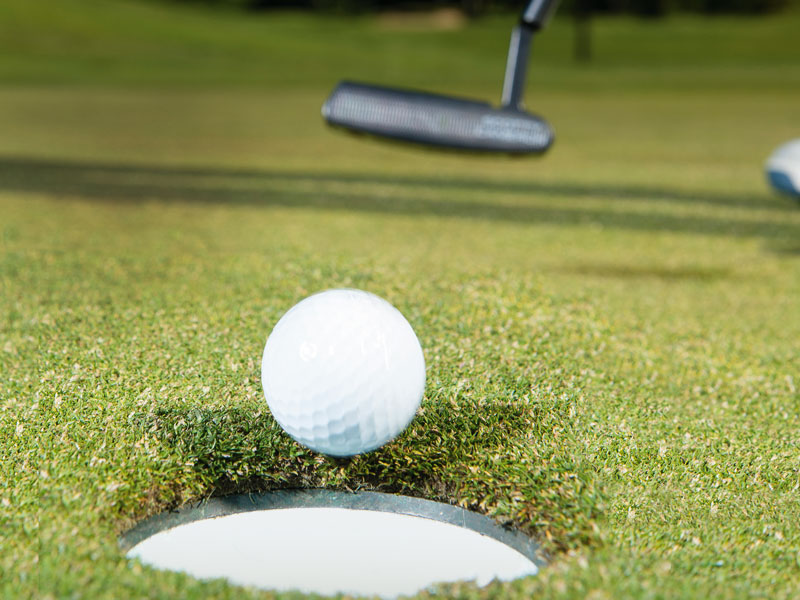Rules of Golf: Putting Green Essentials
A snapshot of the essential putting green 'do's and don'ts'


In this article and the accompanying video, we take a look at the basics of what you can and can't do on the putting green
Rules of Golf: Putting Green Essentials
NEW FOR 2020 – FEATURED PRODUCTS
Golf Monthly is partnering with Titleist and FootJoy as our official golf ball, golf bag, footwear and apparel partners for this year.
Shop the featured FootJoy footwear and apparel worn in this video:
- Shop FootJoy Men’s shoes
- Shop FootJoy Men’s shirts
- Shop FootJoy Men’s pullovers/mid-layers
- Shop FootJoy Men’s jackets/outer-layers
- Shop FootJoy Men’s trousers
- Shop FootJoy Men’s gloves
- Shop FootJoy Men’s belts & accessories
- Find out more about the featured Titleist golf balls used in this video Discover Titleist Pro V1 and Pro V1x balls
- Find out more about the featured Titleist golf bag used in this video Discover Titleist Stand Bags
When the R&A and USGA published the latest set of rules revisions in January 2019, the putting green was one of the biggest areas of change. In a bid to make the game faster and fairer, they introduced a set of important revisions that are well worth getting to grips with. Here is everything you need to know.
Firstly, you can now tap down the vast majority of imperfections on the green. Previously, this was restricted to repairing things such as pitch marks and old hole plugs but this has now been extended to include ‘damage on the putting green’ such as shoe marks, animal tracks and embedded objects (like stones). There is one slight warning here – the new rule does not cover repairs to damage that results from things such as aeration holes, irrigation or natural surface imperfections such as weeds.
Get the Golf Monthly Newsletter
Subscribe to the Golf Monthly newsletter to stay up to date with all the latest tour news, equipment news, reviews, head-to-heads and buyer’s guides from our team of experienced experts.
Why you SHOULD mark your golf ball
The most eye-catching new rule is that you can now putt with the flagstick in when your ball is on the green. This is rule 13.2 (you’ll find everything you’ll need on this part of the rule on pages 72-74 of the smaller Player’s Edition book) and in our experience this has been a good move to improve the pace of play. Don’t forget, this was introduced by the ruling bodies to speed up the game so, in our experience, players are happy to putt with the flag in from longer range, while many golfers still like it out from short range. Ultimately however, the choice about whether to have it in or out is down to the individual.
Should you putt with the flagstick in?
Another important change worth knowing relates to what happens if you do something that accidentally causes your ball to move on the putting green, like dropping your marker on your ball. In this situation, there is no penalty but you must replace the ball to its original position.
Penalty areas: How to proceed under Rule 17
The last one to mention here is that, when resting against the flagstick, the ball is now considered holed when any part of it is below the surface of the green. You do not now have to wiggle the flag to let the ball drop down.
On the putting green, perhaps more than anywhere else, knowing the latest set of rules could save you shots. Take a moment to read Rule 13 and you shouldn’t be left in any doubt!

Jeremy Ellwood has worked in the golf industry since 1993 and for Golf Monthly since 2002 when he started out as equipment editor. He is now a freelance journalist writing mainly for Golf Monthly. He is an expert on the Rules of Golf having qualified through an R&A course to become a golf referee. He is a senior panelist for Golf Monthly's Top 100 UK & Ireland Course Rankings and has played all of the Top 100 plus 91 of the Next 100, making him well-qualified when it comes to assessing and comparing our premier golf courses. He has now played 1,000 golf courses worldwide in 35 countries, from the humblest of nine-holers in the Scottish Highlands to the very grandest of international golf resorts. He reached the 1,000 mark on his 60th birthday in October 2023 on Vale do Lobo's Ocean course. Put him on a links course anywhere and he will be blissfully content.
Jezz can be contacted via Twitter - @JezzEllwoodGolf
Jeremy is currently playing...
Driver: Ping G425 LST 10.5˚ (draw setting), Mitsubishi Tensei AV Orange 55 S shaft
3 wood: Srixon ZX, EvenFlow Riptide 6.0 S 50g shaft
Hybrid: Ping G425 17˚, Mitsubishi Tensei CK Pro Orange 80 S shaft
Irons 3- to 8-iron: Ping i525, True Temper Dynamic Gold 105 R300 shafts
Irons 9-iron and PW: Honma TWorld TW747Vx, Nippon NS Pro regular shaft
Wedges: Ping Glide 4.0 50˚ and 54˚, 12˚ bounce, True Temper Dynamic Gold 105 R300 shafts
Putter: Kramski HPP 325
Ball: Any premium ball I can find in a charity shop or similar (or out on the course!)
-
 JM Eagle LA Championship Prize Money Payout 2025
JM Eagle LA Championship Prize Money Payout 2025The LPGA Tour heads to California for the JM Eagle LA Championship, where the largest prize money payout of the season so far is on the table
By Mike Hall
-
 Corales Puntacana Championship Prize Money Payout 2025
Corales Puntacana Championship Prize Money Payout 2025The PGA Tour’s latest opposite field event features an attractive prize money payout and some former champions in the field
By Mike Hall